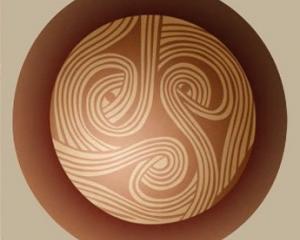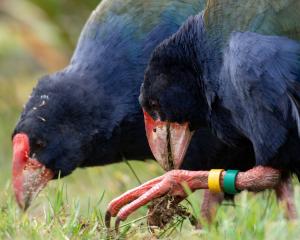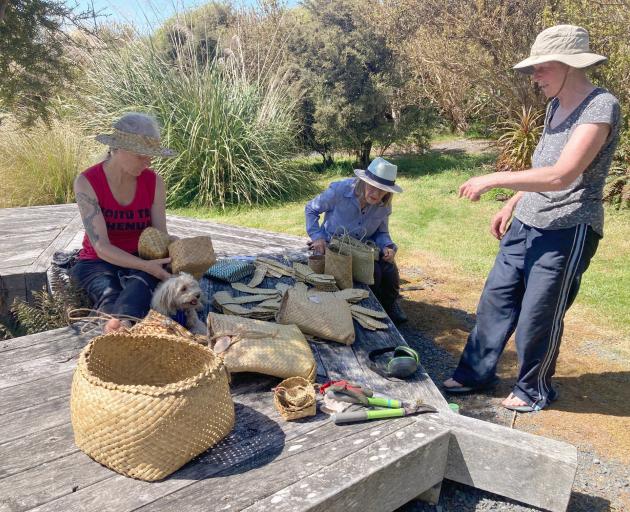
If the heart is torn from the flax bush, where then will the bellbird sing?
This whakatauki/proverb encapsulates the symbiosis between plant and wildlife that is central to te taiao Māori. The fibre of harakeke, or New Zealand flax, was a central resource for them, while the nectar of its flowers provided a favourite food for bellbird, tūi and kākā. Newcomers to Aotearoa also soon learned of its uses and the charm of the birds that frequented it.

So it is not surprising that alongside the Orokonui Ecosanctuary sheltering native vegetation and birdlife is to be found a garden of flax, the pā harakeke, tended and used by Māori and Pākehā alike. Its establishment was a shared project between the ecosanctuary/Te Korowai o Mihiwaka and Kāti Huirapa Rūnaka ki Puketeraki, and was established in 2008 with plants sourced from the Dunedin Botanic Garden and a national collection known as the Renee Orchiston collection.
For most non-Māori, one flax seems just like another and perhaps more of a problem in a contemporary small garden than a joy, so visitors to the pā harakeke are often astonished to learn of the biodiversity there — over 80 different varieties, including many prized cultivars that have been handed down through many generations of Māori weavers, who understand the qualities of individual varieties and what they are suitable for.
The location of the pā outside the sanctuary’s fence was to enable free access to it for all who wish to harvest and use the flax and in so doing to pass on the mātauraka/knowledge and tikaka associated with it. In this way its cultural and practical uses are sustained.
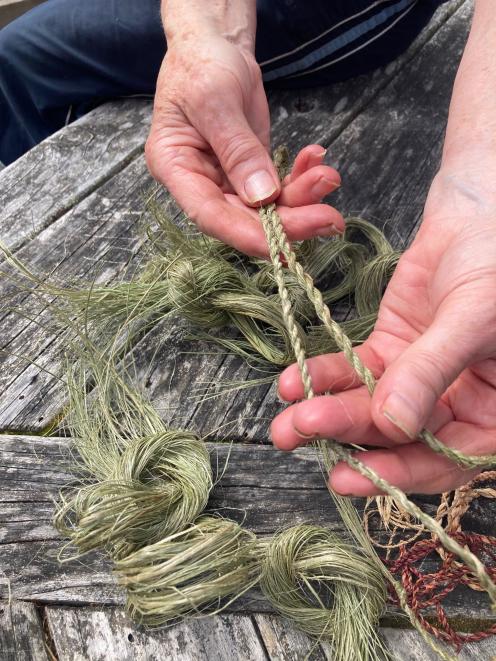
For a number of the (mainly female) team it is more than just a backbreaking task. Most have loved and mastered other crafts. Now, either through this work, or from learning te reo, they have become inspired to learn the Māori art of weaving, raraka. What causes the home lawn-mower such frustration, the fibre in the leaves, whītau or muka, which is both flexible and strong, is the basis for many woven products.
Local experts offer classes and an online course is also available. But above all there is joy in learning from others. So in a break between trimming the plants the women can sometimes be found being shown a new skill, technique, or a new pattern, and admiring the more advanced skills of another.
The "how to ... " questions get answered and the eagerness to take up the next challenge grows, as does a new pleasure in the aesthetic qualities of the harakeke, the varying colours in the finished products, depending on how it has been treated or stored before use, and discovering the qualities in particular types of harakeke.
Visitors to the ecosanctuary often admire the attractive and practical pīkau/backpacks worn by the guides. They are made of harakeke, woven by Sue Hensley. Sue has guided at Orokonui since it opened, and trained many others, as well as sharing her skills in weaving. She has introduced many international visitors to the pleasures of harakeke. It doesn’t take long to learn to make a putiputi, a flax flower.
Practical applications are many and varied, even for the novice weaver. Recently volunteers learned how to plait a fine string to tie around a gift, rather than buy a fancy ribbon, or a stronger cord to tie up plants in the garden or to loop over a gatepost. Other plants growing in the pā such as kiekie and pīkao provide options for the weaver for specialist and decorative purposes.
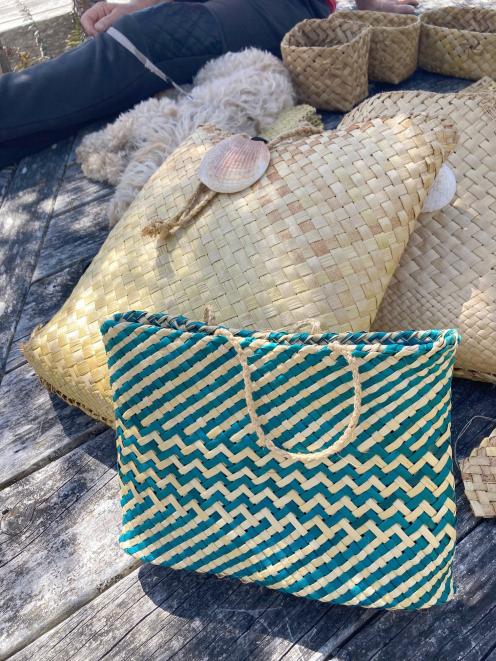
The very highly skilled among weavers of harakeke are artists and recognised as such. Whītau from harakeke harvested at Orokonui’s pā was used in a work by Madison Kelly (Kāi Tahu, Kāti Mamoe) and Mya Morrison-Middleton (Ngāi Tahu, Ngāi Tuāhuriri) created for "Paemanu: Tauraka Toi", an exhibition at the Dunedin Public Art Gallery in 2021.
While most New Zealanders have learned of the many uses Māori made of the harakeke in pre-European times, its potential as a more sustainable resource than synthetic fibres and even fibreglass, for example in surfboards, has led to a renewed interest in it in the search for ways to reduce the carbon footprint of industry in today’s steadily heating atmosphere.
In conservation, too, the value of harakeke is now widely recognised as a means of dealing with run-off from grazed pasture to clean our polluted waterways. It is also central to the restoration of wetlands, at the same time providing the habitat needed to protect and restore the diversity of our native fauna.
Next time you visit the ecosanctuary, take the time to turn right between the two pou that mark the entrance to the pā harakeke and follow the path through the many and varied plants, perhaps more thoughtfully and respectfully than you perhaps have done in the past.
• Alyth Grant is a volunteer, these days helping and learning in the pā harakeke.





